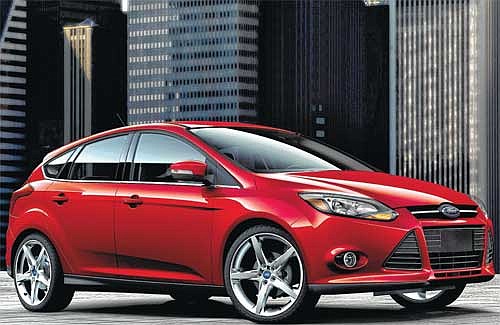Once, there was an automobile industry that rebelled against any suggestion of improved fuel economy, that labeled as "impossible" the achievement of more miles per gallon without reduced crash safety, that treated economy cars as motorized dross for the poor and certifiably less fortunate.
That automobile industry no longer exists.
Ample proof of change can be found in the market segments for compact and subcompact cars, in which manufacturers are battling for sales and customer loyalty by doing what they once deemed undoable, offering high fuel economy and top road performance in small cars with base prices below $20,000; getting top safety ratings from the federal government and the automobile insurance industry in little cars once called "crash buggies"; and redefining "luxury" by turning out small cars with the comforts, amenities and communications technology found in their larger, more expensive brethren.
Consider, as a case in point, the 2012 Ford Focus SE four-door hatchback. It gets 26 miles per gallon in the city and 36 on the highway using regular gasoline. And it does that with a direct- injection 2-liter in-line four-cylinder engine that puts out a maximum 160 horsepower and 146 footpounds of torque.
In the past, Ford would have been happy with that little car. It would have driven it up to Capitol Hill
to demonstrate the company's born-again attitude
toward corporate responsibility. But today's Ford is surrounded by rivals (Chevrolet, Honda, Hyundai, Kia) that have all managed to coax 40 miles per gallon or more out of compact cars without using expensive gas-electric hybrid technology.
The rivals have hit the 40-mpg mark using fourcylinder gasoline engines with direct fuel injection and variable valve timing, and using other technology to better mix fuel and air for a bigger internal bang without an increase in fuel consumption. The companies increasingly are linking their little engines to more efficient manual transmissions. Five-speed gearboxes have become the norm. Others are using continuously variable transmissions (CVTs), which attempt to save fuel by eschewing fixed gear ratios altogether.
Ford has done something similar with the new Focus. You want more than 36 miles per gallon on the highway? Try the Focus SE with Ford's SFE (Super Fuel Economy) technology. It gets 28 mpg in the city and 40 on the highway by using Ford's more efficient dual-clutch PowerShift transmission, 16-inch steel wheels with aerodynamically designed covers to help reduce fuel consumption through lower wind drag, and active grille shutters to reduce wind drag at highway speeds.
But it would all be meaningless if the new Focus, ultimately, were a lousy car. It's not. It is comfortable enough for a cross-country drive. It is nimble, highly maneuverable. It's actually fun to drive.
